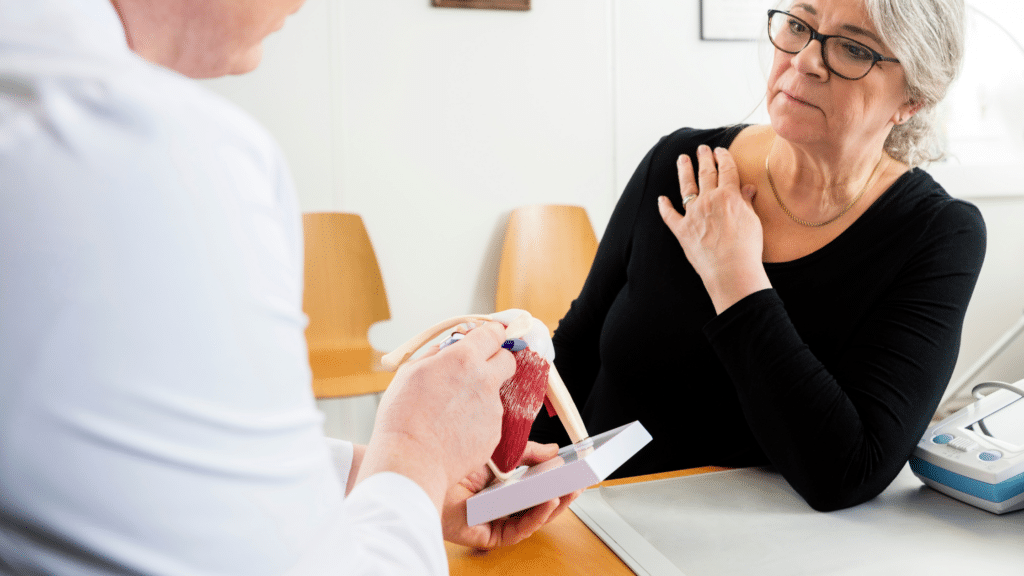Rotator cuff surgery is a common procedure performed to repair a torn rotator cuff, a group of four small muscles in the shoulder that allow the upper arm to rotate. This surgery is often necessary when conservative treatments have failed to provide relief and restore function to the shoulder. In this comprehensive guide, we will explore the procedure of rotator cuff surgery, the recovery process, and important considerations for patients.
What is a Rotator Cuff Tear?
Before delving into the details of rotator cuff surgery, it’s important to understand what a rotator cuff tear is. The rotator cuff is a group of tendons and muscles that surround the shoulder joint, providing stability and allowing for a wide range of motion. When these tendons are torn, the upper arm bone (humerus) may become detached from the shoulder socket (glenoid).
Rotator cuff tears can occur due to a sudden injury, such as a fall or heavy lifting, or gradually over time due to wear-and-tear and repetitive activities. Common symptoms of a rotator cuff tear include pain, weakness, limited range of motion, and difficulty performing daily activities.
When is Rotator Cuff Surgery Recommended?
Rotator cuff surgery is typically recommended in the following cases:
- Full thickness tear: A complete tear of the rotator cuff tendon.
- Partial thickness tear: When conservative treatments, such as physical therapy, have failed to provide relief and restore function after two to three months.
- Failed conservative treatment: If a patient continues to experience pain and difficulty with activities despite undergoing physical therapy for two to three months.
It is important to note that not all rotator cuff tears require surgery. Some small tears may be managed successfully with conservative treatments alone.
Alternatives to Rotator Cuff Surgery
In certain cases, surgery may not be the first line of treatment for rotator cuff tears. Alternative options include:
- Physical therapy: A structured exercise program to strengthen the shoulder muscles and improve range of motion.
- Medication: Nonsteroidal anti-inflammatory drugs (NSAIDs) or corticosteroid injections to reduce pain and inflammation.
- Lifestyle modifications: Avoiding activities that aggravate the shoulder, modifying technique or form during sports or exercises, and resting the shoulder when necessary.
However, it is important to consult with an orthopaedic surgeon to determine the most appropriate treatment plan based on the severity of the tear and individual factors.
The Procedure: How is Rotator Cuff Surgery Performed?
Arthroscopic Approach
Rotator cuff surgery is commonly performed using an arthroscopic approach. This minimally invasive technique involves making small incisions in the shoulder and inserting a tiny camera, called an arthroscope, to visualize the inside of the joint. This allows the surgeon to assess the tear and perform the necessary repairs with specialized instruments.
The benefits of arthroscopic rotator cuff surgery include:
- Smaller incisions and reduced scarring
- Less postoperative pain
- Faster recovery time
- Lower risk of complications
Surgical Techniques
During the surgery, the orthopaedic surgeon will reattach the torn tendon to the bone using sutures. The success of the surgery depends on the healing of the interface between the tendon and bone.
The specific techniques used may vary depending on the size and location of the tear. In some cases, the surgeon may need to remove bone spurs or perform a subacromial decompression to create more space for the repaired tendon.
Anesthesia Options
Rotator cuff surgery can be performed under different types of anesthesia, including:
- General anesthesia: The patient is completely asleep and unaware during the procedure.
- Regional anesthesia: The surgical area is numbed, and the patient remains awake but comfortable. This can be achieved through a nerve block, which blocks nerve signals in the shoulder area.
The choice of anesthesia will be discussed with the anesthesiologist and surgeon based on the patient’s preferences, medical history, and the complexity of the surgery.
Preparing for Rotator Cuff Surgery
Before undergoing rotator cuff surgery, thorough preparation is essential to ensure a successful procedure and smooth recovery. The following steps are typically involved in the preparation process:
Consultation with an Orthopaedic Surgeon
The first step is to schedule a consultation with an orthopaedic surgeon who specializes in shoulder surgery. During this consultation, the surgeon will evaluate the patient’s condition, review medical history, and discuss treatment options. It is important to ask any questions or express concerns during this meeting to fully understand the procedure and its potential outcomes.
Preoperative Instructions
The surgeon’s office will provide specific preoperative instructions to follow in the days leading up to the surgery. These instructions may include dietary restrictions, medications to avoid, and guidelines for showering and cleansing the surgical area.
Medication and Fasting Guidelines
The surgeon will provide instructions regarding medication management prior to the surgery. Some medications, such as blood thinners, may need to be adjusted or temporarily discontinued to minimize the risk of excessive bleeding during the procedure. Fasting guidelines will also be provided to ensure an empty stomach before surgery, typically starting at midnight on the night before the procedure.
The Day of the Surgery
The day of the surgery can be both exciting and nerve-wracking. Understanding what to expect can help ease any anxiety. Here is a general overview of what typically happens on the day of rotator cuff surgery:
Check-In and Admission Process
Upon arrival at the hospital or surgical center, the patient will check-in and complete any necessary paperwork. Vital signs, such as blood pressure and heart rate, will be recorded, and a hospital gown will be provided. The nursing staff will guide the patient through the admission process and answer any last-minute questions.
Anesthesia Administration
Before the surgery, the anesthesia team will review the patient’s medical history, allergies, and any previous experiences with anesthesia. The chosen anesthesia method, whether general or regional, will be administered by an experienced anesthesiologist or nurse anesthetist to ensure the patient’s comfort and safety throughout the procedure.
Operating Room Preparation
Once the anesthesia has taken effect, the patient will be transferred to the operating room. The surgical team, including the surgeon, nurses, and technicians, will be present to prepare the patient for the procedure. Sterile drapes will be placed around the shoulder area, and the surgical site will be cleansed and prepped.
Postoperative Care and Recovery
After completing the rotator cuff surgery, the patient will be moved to a recovery area where their vital signs and overall condition will be closely monitored. The following aspects are crucial to the postoperative care and recovery process:
Hospital Stay (if applicable)
In some cases, rotator cuff surgery may require an overnight hospital stay for close monitoring and pain management. The surgeon will determine the appropriate level of care based on the patient’s individual needs and the complexity of the procedure.
Pain Management
Postoperative pain control is essential to ensure the patient’s comfort and facilitate a smoother recovery. The medical team will provide pain medication as prescribed and monitor its effectiveness. It is important for patients to communicate their pain levels and any concerns to the nursing staff.
Rehabilitation and Physical Therapy
Physical therapy plays a critical role in the recovery process after rotator cuff surgery. The therapist will design a personalized rehabilitation program to gradually restore range of motion, strength, and function to the shoulder. Initially, therapy may focus on gentle exercises and passive range of motion. As healing progresses, more active exercises and strengthening activities will be introduced.
Home Care Instructions
Before discharge, the patient will receive detailed instructions on wound care, medication management, and activity restrictions. It is important to follow these instructions closely to promote proper healing and avoid complications. The surgeon may also provide a sling or immobilizer to protect the shoulder and support the healing process.
Success Rate of Rotator Cuff Surgery
The success rate of rotator cuff surgery is generally high, especially for small tears. Studies have shown that more than 95% of patients with small tears experience a successful outcome after surgery. For larger tears involving two tendons, the success rate is still greater than 70%. It is important to note that the success of the surgery depends on various factors, including tear size, patient age, overall health, and adherence to postoperative rehabilitation.
Choosing a Surgeon for Rotator Cuff Surgery
Selecting the right orthopaedic surgeon for rotator cuff surgery is crucial to ensure the best possible outcome. Consider the following factors when choosing a surgeon:
- Experience and expertise in shoulder surgery, specifically rotator cuff repairs.
- Board certification and fellowship training in sports medicine or shoulder surgery.
- Positive patient reviews and testimonials.
- Access to advanced technology and facilities.
It is advisable to schedule a consultation with the surgeon to discuss their approach, ask questions, and assess their compatibility with your needs and goals.
Conclusion
Rotator cuff surgery is a highly effective treatment option for individuals with rotator cuff tears that have not responded to conservative treatments. By understanding the procedure, postoperative care, and potential risks, patients can make informed decisions and actively participate in their recovery. Working closely with an experienced orthopaedic surgeon and following a tailored rehabilitation program can lead to improved shoulder function and a return to an active, pain-free lifestyle.

